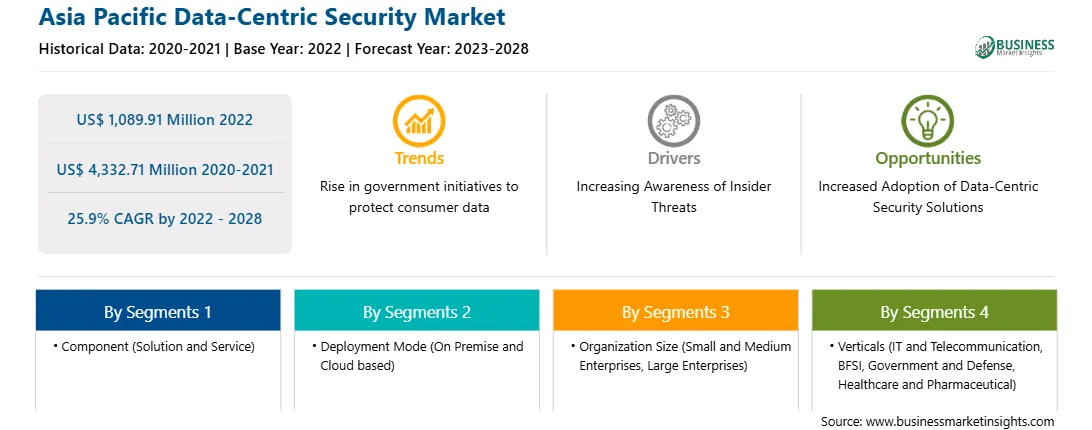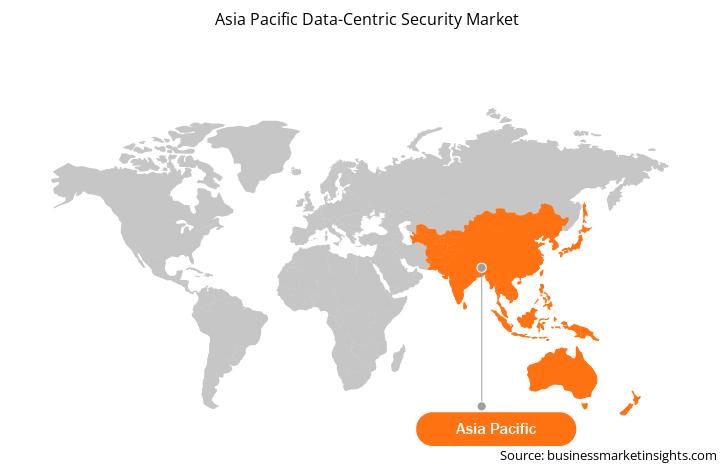Increase in Data and Bring Your Own Device (BYOD) Policies
Most big data experts agree that the generated data will grow exponentially during the forecast period. Based on research from Seagate's Data Age 2025 report, the world's data sphere will reach 175 zettabytes by 2025. This growth is attributed to the enormous increase in people working, studying, and amusing themselves from home. Hence, securing these data will be the companies' primary objective, as data-driven business models will be widely adopted in the future. Hence, such a transition is anticipated to create lucrative opportunities for the data-centric-security vendors over the forecast period. Furthermore, the IT infrastructure is anticipated to become more complicated and heterogeneous due to the introduction of new platforms, bring your own device (BYOD) regulations, choose your own device (CYOD) trends, business apps, and other technologies. The BYOD and CYOD trends are becoming more and more common in business settings due to the quick improvements in mobile computing. Through mobile devices, employees may access organizational data from anywhere, at any time, thanks to these developments, which also boost employee productivity to protect organizational data from potential hazards and maintain its confidentiality and integrity. Based on the Bitglass survey, 69% of respondents said their organizations allow employees to use personal devices for work while allowing contractors, partners, customers, and suppliers. However, several companies fail to maintain security due to the unsuccessful incorporation of new devices into the existing security infrastructure. Based on the report by Software Guild, 72% of organizations have no plans to secure BYOD devices. Hence, such factors will likely create mammoth opportunities for the data-centric- security market players.
Market Overview
The data-centric security market in APAC is sub-segmented into China, India, Japan, Australia, South Korea, and the Rest of APAC. The adoption of cybersecurity solutions will likely grow with the increasing internet penetration in developing and developed countries. In addition, expanding wireless networks to mobile devices has increased the vulnerability to data attacks, making cybersecurity an essential and indispensable part of every organization. Many emerging countries, such as India, China, Singapore, and Japan, face increasing cybersecurity problems. India has rapidly increased cybercrime records, ranking fifth in total domain name system (DNS) intrusions. According to Gemalto, India accounts for 37% of the global breaches in compromised or stolen records. Increasing awareness among enterprises of the importance of saving money and resources by moving their data to the cloud rather than maintaining and creating new data storage drives the demand for cloud-based solutions, increasing the adoption of on-demand security services. Due to these advantages, large enterprises and SMEs are gradually adopting cloud-based data security solutions. Over the next few years, cloud ecosystems and platforms are set to serve as the launchpads for an explosion in the speed and scale of digital innovation.
Strategic insights for the Asia Pacific Data-Centric Security provides data-driven analysis of the industry landscape, including current trends, key players, and regional nuances. These insights offer actionable recommendations, enabling readers to differentiate themselves from competitors by identifying untapped segments or developing unique value propositions. Leveraging data analytics, these insights help industry players anticipate the market shifts, whether investors, manufacturers, or other stakeholders. A future-oriented perspective is essential, helping stakeholders anticipate market shifts and position themselves for long-term success in this dynamic region. Ultimately, effective strategic insights empower readers to make informed decisions that drive profitability and achieve their business objectives within the market. The geographic scope of the Asia Pacific Data-Centric Security refers to the specific areas in which a business operates and competes. Understanding local distinctions, such as diverse consumer preferences (e.g., demand for specific plug types or battery backup durations), varying economic conditions, and regulatory environments, is crucial for tailoring strategies to specific markets. Businesses can expand their reach by identifying underserved areas or adapting their offerings to meet local demands. A clear market focus allows for more effective resource allocation, targeted marketing campaigns, and better positioning against local competitors, ultimately driving growth in those targeted areas.Asia Pacific Data-Centric Security Strategic Insights

Asia Pacific Data-Centric Security Report Scope
Report Attribute
Details
Market size in 2022
US$ 1,089.91 Million
Market Size by 2028
US$ 4,332.71 Million
Global CAGR (2022 - 2028)
25.9%
Historical Data
2020-2021
Forecast period
2023-2028
Segments Covered
By Component
By Deployment Mode
By Organization Size
By Verticals
Regions and Countries Covered
Asia-Pacific
Market leaders and key company profiles
Asia Pacific Data-Centric Security Regional Insights

Asia Pacific Data-Centric Security Market Segmentation
The Asia Pacific data-centric security market is segmented into component, deployment mode, organization size, verticals, and country.
Based on component, the market is bifurcated into solution and service. The service segment is expected to register the larger market share in 2022. Based on deployment mode, the Asia Pacific data-centric-security market is segmented into cloud-based and on-premises. The cloud-based segment is projected to hold a larger market share in 2022. On the basis of organization size, the data-centric security market is segmented into small and medium enterprises and large enterprises. In 2022, the large enterprises is expected to hold the largest market share.
In terms of verticals, the Asia Pacific data-centric-security market is categorized into government and defense, healthcare & pharmaceuticals, IT and telecommunication, BFSI, and others. The IT and telecommunication segment is projected to hold the largest market share in 2022.
Based on country, the market is segmented into Australia, China, India, Japan, South Korea, and the Rest of Asia Pacific. China dominated the market share in 2022. Broadcom Corporation, Forcepoint, IBM Corporation, Informatica Corporation, Micro Focus, NetApp, Orange Cyberdefense, Talend, and Varonis are the leading companies operating in the data-centric security market in the region.
The Asia Pacific Data-Centric Security Market is valued at US$ 1,089.91 Million in 2022, it is projected to reach US$ 4,332.71 Million by 2028.
As per our report Asia Pacific Data-Centric Security Market, the market size is valued at US$ 1,089.91 Million in 2022, projecting it to reach US$ 4,332.71 Million by 2028. This translates to a CAGR of approximately 25.9% during the forecast period.
The Asia Pacific Data-Centric Security Market report typically cover these key segments-
The historic period, base year, and forecast period can vary slightly depending on the specific market research report. However, for the Asia Pacific Data-Centric Security Market report:
The Asia Pacific Data-Centric Security Market is populated by several key players, each contributing to its growth and innovation. Some of the major players include:
The Asia Pacific Data-Centric Security Market report is valuable for diverse stakeholders, including:
Essentially, anyone involved in or considering involvement in the Asia Pacific Data-Centric Security Market value chain can benefit from the information contained in a comprehensive market report.